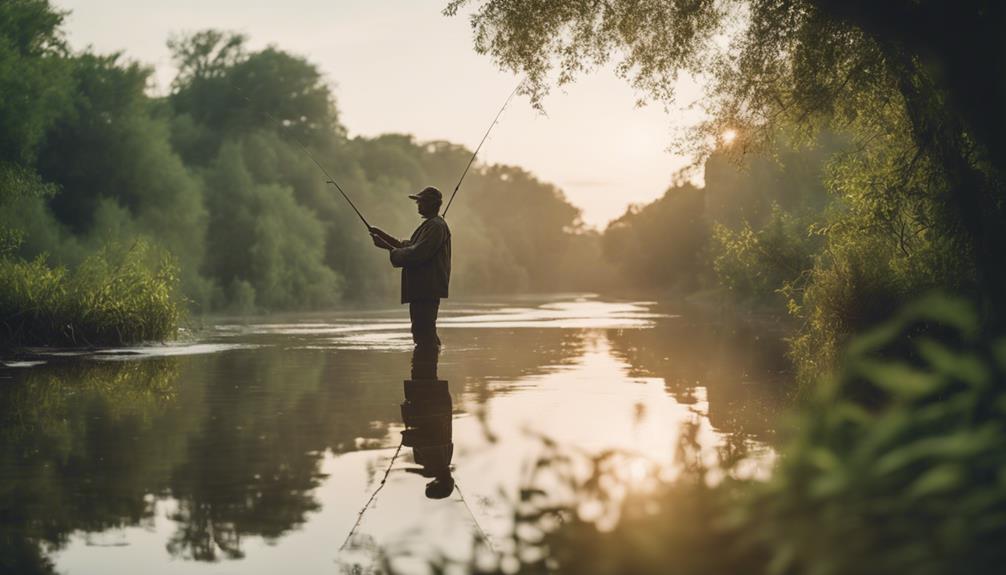Mastering primitive weapons is key to boosting your survival success in nature. Start with basic tools like spears, bows, and atlatls, which are effective for hunting and self-defense. Learn to craft these weapons using natural materials, honing your skills through regular practice. Understanding the cultural significance of these tools adds depth to your survival knowledge. Experiment with modern materials for improved functionality, but remember that consistent practice with aiming and throwing techniques is essential. By enhancing these skills, you'll gain confidence and independence. Keep exploring, and you'll discover even more techniques that will elevate your survival game.
Key Takeaways
- Practice Regularly: Consistent practice with spears, bows, and slings is crucial to mastering aiming and throwing techniques for effective use.
- Learn Material Selection: Understand the properties of natural and modern materials to craft durable and efficient primitive weapons.
- Embrace Cultural Significance: Recognize the historical and cultural narratives behind weapons to appreciate their craftsmanship and enhance your skills.
- Set Specific Goals: Track your progress and set achievable milestones to improve your weapon crafting and usage abilities systematically.
Types of Primitive Weapons
Primitive weapons come in various forms, each designed for specific survival needs and hunting techniques.
You might consider spears, which consist of a sharp stick that can be enhanced with bone or metal tips. Atlatls can increase your throwing power and range.
Bows, while straightforward to construct, require practice for effective use; you can replicate simple historic designs. If you're targeting small game, blowguns are easy to make, using darts crafted from basic materials.
Slings offer a historical option that's simple to craft, while tomahawks serve as lightweight, multifunctional tools.
Understanding these weapons equips you for survival scenarios, allowing you to adapt to your environment and improve your chances of success in the wild.
Crafting Essential Skills
Mastering the art of crafting weapons requires dedicated practice and a commitment to developing your skills. To become proficient, you'll need to focus on specific techniques and materials, honing your abilities over time. Here's a quick overview of essential skills:
| Skill | Description |
|---|---|
| Basic Tool Making | Learn to create simple tools from natural materials. |
| Weapon Assembly | Understand how to assemble parts for stability and functionality. |
| Aiming Techniques | Practice aiming and throwing to improve accuracy and effectiveness. |
With consistent practice, you'll enhance your survival skills and gain confidence in using primitive weapons. Remember, the more you hone these techniques, the better prepared you'll be for any situation.
Cultural Significance of Weapons

Many cultures have used weapons not just for survival, but as symbols of identity and heritage, reflecting their unique histories and values.
When you explore primitive weapons, you uncover stories of the people who crafted them, showcasing their resourcefulness and traditions. For example, the Coast Salish people utilized non-industrial tools, like those displayed in the Suquamish Museum, revealing their connection to the land and community.
Weapons often serve as markers of cultural pride, embodying the skills passed down through generations. Understanding this significance enhances your appreciation for these tools, transforming your perspective on survival.
You'll find that every spear or bow carries with it the weight of history, making your mastery of these weapons even more meaningful.
Practical Applications Today
In today's world, the skills to craft and use primitive weapons can considerably enhance your survival preparedness and self-sufficiency. You mightn't realize how these age-old techniques can be applied practically: By learning how to create and use primitive weapons, such as a bow and arrow or a simple spear, you can expand your ability to hunt for food and defend yourself in a dangerous situation. These skills can also be valuable in a variety of outdoor activities, such as camping and hiking. It’s important to explore practical prepping tactics that include these traditional skills, as they can provide a sense of security and self-reliance in any situation.
- Hunting and Gathering: Use spears or bows to hunt small game, providing food during emergencies.
- Self-Defense: Primitive weapons can serve as effective tools for personal protection in survival scenarios.
- Craftsmanship: Building these weapons hones your crafting skills, increasing your resourcefulness in the wild.
- Cultural Awareness: Learning about primitive weapons connects you to historical practices, enriching your understanding of survival techniques.
Mastering Weapon Usage

To effectively wield primitive weapons, you need to practice regularly and understand the nuances of each tool's design and function.
Start by mastering the basics of each weapon type, such as spears, bows, and slings. Spend time honing your throwing and aiming techniques, as precision is essential for success. Experiment with different grips and stances to find what feels most comfortable and effective for you.
Consider joining a local group or finding a mentor who can provide feedback and guidance. Record your progress and set specific goals to track your improvement.
Modern Materials in Crafting
Incorporating modern materials into your primitive weapon crafting can greatly enhance both functionality and durability. By blending traditional techniques with contemporary resources, you can create more effective tools.
Here are some materials to take into account:
- Carbon Fiber: Lightweight yet strong, perfect for spear shafts and bow limbs.
- Paracord: Versatile and durable, ideal for bowstrings and sling construction.
- Metal Tips: Use for arrows or spears to increase piercing power and accuracy.
- Synthetic Blades: Engineered for durability, these can replace traditional stone or bone tips in tomahawks.
Enhancing Survival Preparedness

Blending modern materials into your primitive weapon crafting not only boosts their effectiveness but also plays a significant role in enhancing your overall survival preparedness. By using materials like fiberglass or carbon fiber, you can create lighter and more durable weapons. Incorporating modern techniques allows you to adapt traditional designs for better functionality.
| Weapon Type | Modern Material | Benefit |
|---|---|---|
| Spear | Carbon fiber shaft | Increased strength |
| Bow | Fiberglass limbs | Greater flexibility |
| Blowgun | PVC pipe | Improved air flow |
| Tomahawk | Aluminum head | Reduced weight |
Utilizing these advancements helps you become more efficient and effective in survival situations, ensuring you're better prepared for any challenge.
Frequently Asked Questions
What Are the Safety Considerations When Using Primitive Weapons?
When using primitive weapons, you've gotta prioritize safety. Always wear protective gear, guarantee a clear target area, and practice proper handling techniques. Remember, accidents can happen, so stay aware of your surroundings and others nearby.
How Do I Choose the Right Primitive Weapon for My Needs?
To choose the right primitive weapon, assess your needs, consider the type of game or tasks you'll tackle, and evaluate your skill level. Experiment with different options to find what feels comfortable and effective for you.
Can Primitive Weapons Be Used for Self-Defense Against Animals?
Primitive weapons can be your trusty shields against ferocious beasts. With spears and bows in hand, you'll feel like a modern-day warrior, wielding nature's tools to protect yourself in the wild. Just practice!
What Are Common Mistakes to Avoid When Crafting Primitive Weapons?
When crafting primitive weapons, avoid rushing your construction, neglecting materials quality, or underestimating your skill level. Take your time, practice regularly, and guarantee you're using the best resources to create effective, reliable tools for your needs.
How Can I Maintain and Repair My Primitive Weapons Effectively?
Just like nurturing a garden, maintaining your primitive weapons requires care. Regularly inspect for wear, clean them after use, and repair any damage promptly to guarantee they stay reliable when you need them most.
Conclusion
By mastering primitive weapons, you're not just surviving; you're transforming into a modern-day warrior, echoing the fierce spirit of ancient hunters!
Picture yourself crafting a spear, its tip glistening like a comet, ready to pierce the veil of the wilderness. Each weapon you wield becomes an extension of your will, turning you into a legend among the trees.
Embrace this adventure, and you'll find yourself not just prepared but unstoppable, conquering every challenge nature throws your way!










